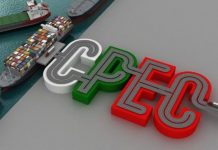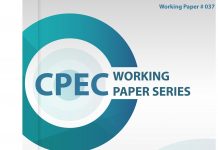The main purpose of the study is to explore post BRT scenario from the motorist perspective to address their concerns. The intent is to guide future decision making in attracting this larger group of road users toward BRT as otherwise the project of BRT would fail to yield its potential benefits of congestion mitigation, reducing intra city journey time delays and betterment of overall environment of the city.500 motorist of the city were interviewed through a structured questionnaire. The respondents were randomly selected from various shopping areas and other parking sites along the major arterial road of the city which is also proposed route of the BRT project that is currently being constructed. Majority of the respondents were male, under 45 years of age and educated. Mostly were either students or entrepreneurs and were from lower middle to middle class with earning of up to Rs.100,000/= per month. Family size of almost half of the respondents is 4 to 6 persons while remaining half are either smaller families with 1 to 3 persons (20%) or larger families with 7 to 10 persons (28%). Almost half of the respondent were single car owners and two third of the respondents were using cars larger than 1000cc to 1800 cc engine size. While remaining one third were using smaller engine size cars. Half of the respondent started their journey from two ends or population hubs of the city along the East West corridor, i.e., City (in the East) and Hayatabad (in the West). However, the destination of almost three quarter of the respondents were two major commercial centers of the city, namely University road and Cantonment area. Trip timing is focused in the morning peak whereas scattered in the evening. Majority of the respondent ride alone though a significant number (29%) also sharing their ride with others. Parking does not seem to be a big problem in the city as the statistics reveal that it takes less than 5 minutes for 86% of the respondents to find a place for their cars to be parked and that too in 70% of the cases is free. The top most common problems with the existing public transport system in the city ranked by the respondents were delays, poor services, not family friendly, unprofessional or uncourteous staff and uncertainty regarding availability of services. Almost 80% responding motorist indicated their intent to use BRT and in case of even longer time for the same journey, 70% of the motorist are ready to switch to this mode. Only a thin minority of 10% respondents showed their willingness to use their own car in the post BRT scenario in the city. Almost one third of the respondents were ready to walk to the BRT station while use of other modes like taxi (10%), Cycle (13%), public transport (9%) personal vehicle (11%) was also suggested by percent of respondent indicated in brackets nest to each mode. Over 31% respondents were ready to walk up to 1 kilometers to reach to the BRT station while same numbers were ready to walk from 1km to 2km. 81% of the respondents are happy with the existing route of BRT .Almost half of the 131 respondent who opted not to use BRT suggested that an efficient feeding network should be associated with the BRT while about a quarter of the respondent proposed a regular and reliable ser
Prof. Syed Akhtar Ali Shah
Associate Professor, Department of Urban
and Regional Planning, University of Peshawar
Dr. Saleem Janjua
Head of Policy, Centre of Excellence for CPEC
Adnan Khan
Research Associate, Centre of Excellence for CPEC

 中文
中文 Urdu
Urdu












